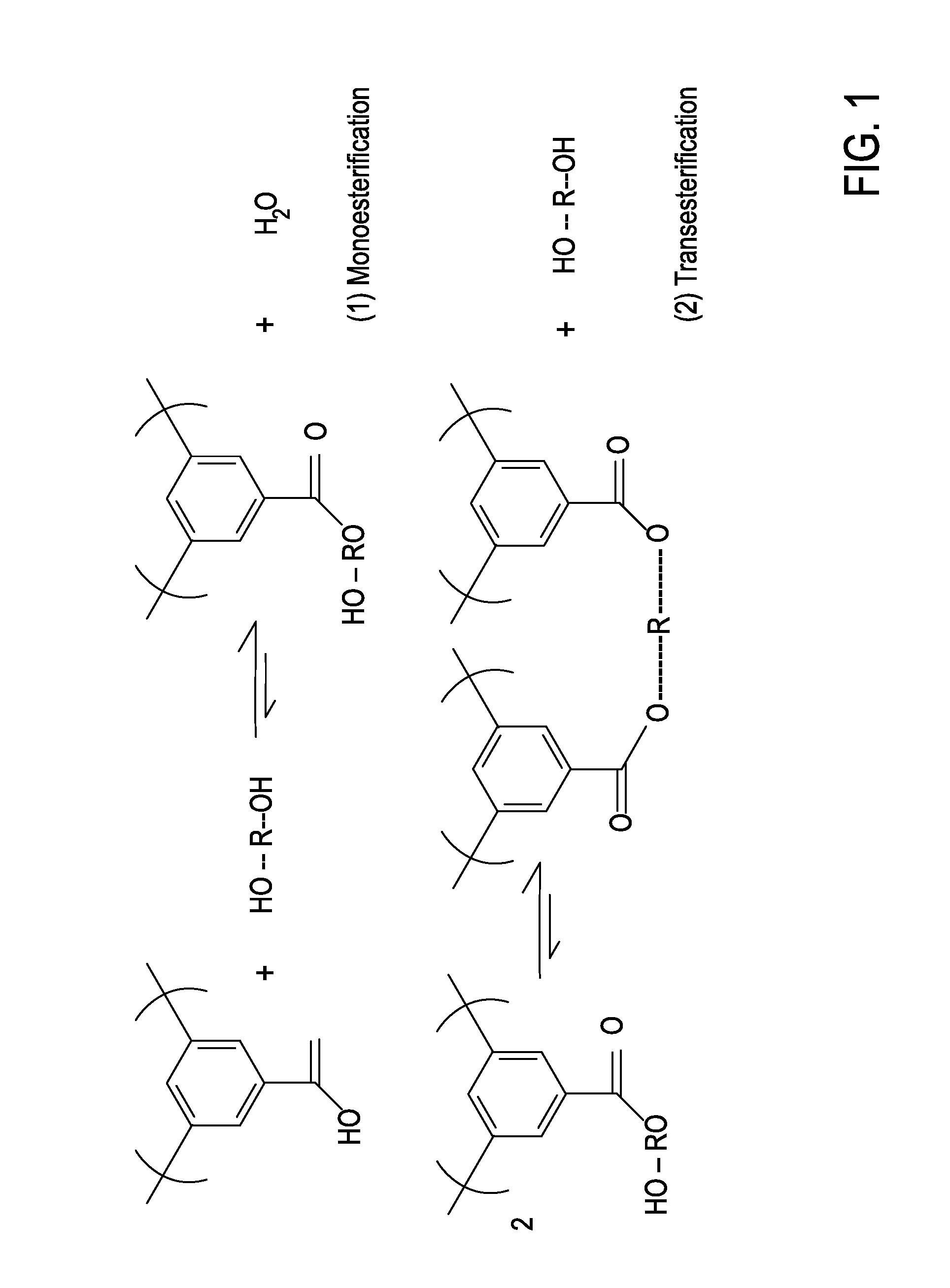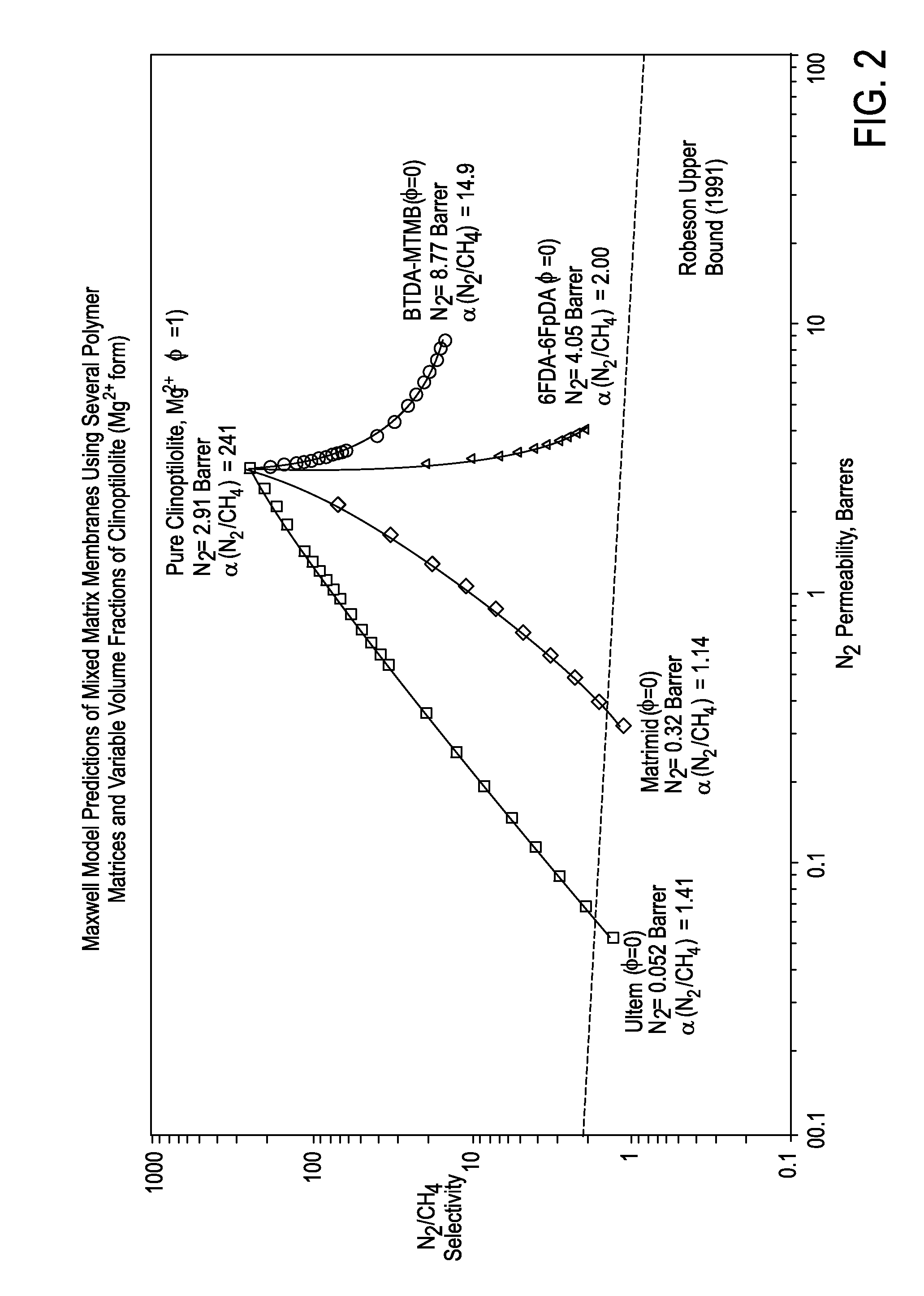Mixed Matrix Membranes
- Summary
- Abstract
- Description
- Claims
- Application Information
AI Technical Summary
Benefits of technology
Problems solved by technology
Method used
Image
Examples
example 1
Properties of a Mixed Matrix Membrane for N2 / CH4
[0106]In one embodiment, a mixed matrix composite (MMC) membrane is used to achieve the necessary selectivity for the nitrogen / methane separation. MMC materials consist of a polymer matrix impregnated uniformly with micron-sized zeolite crystals. The volume fraction of zeolite crystals in the MMC may vary, but an exemplary practical value is about 40%. The polymer matrix largely provides the membrane with the desired manufacturability and permeability, while the zeolite crystals provide a substantial boost to the selectivity far beyond what is achievable in pure-polymer membranes. A pure-zeolite membrane would have the maximum selectivity, but would not be practical due to the brittleness of the membrane. The properties are predicted by the Maxwell Equation, as discussed above and which is well-known to those skilled in the art.
[0107]In an exemplary embodiment a clinoptilolite zeolite that is fully-exchanged with Mg2+ cations is utili...
example 2
Performance of a Mixed Marix Membrane for N2 / CH4
[0108]The exemplary embodiment below illustrates how a mixed matrix membrane in hollow-fiber form, with a N2 / CH4 selectivity of 20 could be capable of producing U.S. pipeline-quality gas (N22 / 85% CH4 in a single stage.
[0109]Operating parameters include:
[0110]Flowrate: 50 MMSCFD (2.08×106 SCFH)
[0111]Composition: 15 mol % N2 / 85 mol %
[0112]Pressure: 1000 psia (6.9 MPa)
[0113]Temperature: 45° C.
[0114]The MMC embodiment for this example is a polyimide blend, BDTA-MTMB9 with 40 vol. % of Mg-clinoptilolite (N2 / CH4 selectivity=20). The membranes will be configured in a hollow-fiber module. The membrane properties and operating parameters are
[0115]N2 Permeability in MMC: 6.06 barrer
[0116]CH4 Permeability in MMC: 0.30 barrer
[0117]Thickness of Active Layer: 0.1 micron
[0118]Fiber Outer Diameter: 300 micron
[0119]Fiber Inner Diameter: 150 micron
[0120]Fiber Active Length: 0.8 m
[0121]Permeate Pressure: 30 psia (210 kPa)
[0122]Simulations were carried o...
PUM
| Property | Measurement | Unit |
|---|---|---|
| Fraction | aaaaa | aaaaa |
| Fraction | aaaaa | aaaaa |
| Percent by mass | aaaaa | aaaaa |
Abstract
Description
Claims
Application Information
 Login to View More
Login to View More - R&D
- Intellectual Property
- Life Sciences
- Materials
- Tech Scout
- Unparalleled Data Quality
- Higher Quality Content
- 60% Fewer Hallucinations
Browse by: Latest US Patents, China's latest patents, Technical Efficacy Thesaurus, Application Domain, Technology Topic, Popular Technical Reports.
© 2025 PatSnap. All rights reserved.Legal|Privacy policy|Modern Slavery Act Transparency Statement|Sitemap|About US| Contact US: help@patsnap.com



